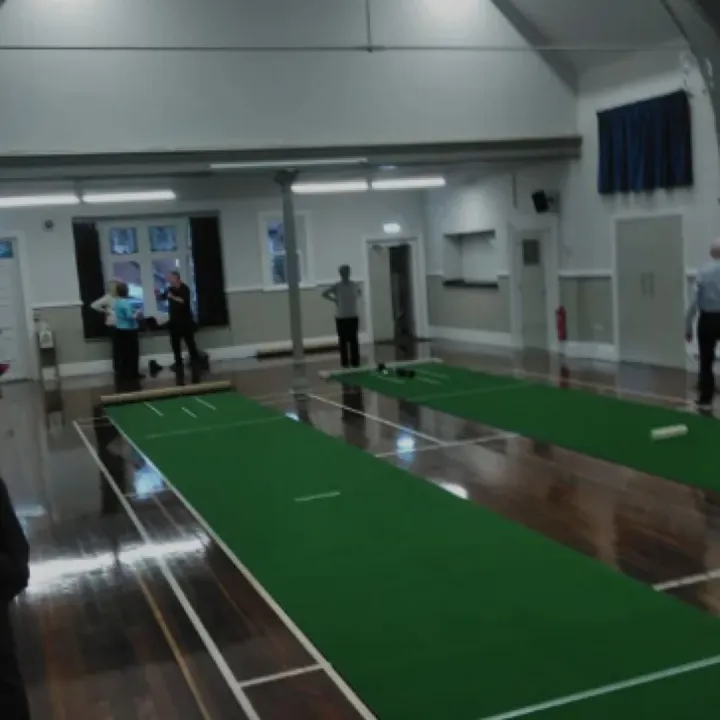







The history of X-ray computed tomography goes back to at least 1917 with the mathematical theory of the Radon transform12 In October 1963, William H. Oldendorf received a U.S. patent for a "radiant energy apparatus for investigating selected areas of interior objects obscured by dense material".3 The first commercially viable CT scanner was invented by Sir Godfrey Hounsfield in 1967.4
Mathematical theory
The mathematical theory behind computed tomographic reconstruction dates back to 1917 with the invention of the Radon transform by the Austrian mathematician Johann Radon. He showed mathematically that a function could be reconstructed from an infinite set of its projections.In 1937, a Polish mathematician, named Stefan Kaczmarz, developed a method to find an approximate solution to a large system of linear algebraic equations. This, and Allan McLeod Cormack's theoretical and experimental work, laid the foundation to another powerful reconstruction method called "Algebraic Reconstruction Technique (ART)" which was later adapted by Sir Godfrey Hounsfield as the image reconstruction mechanism in his famous invention, the first commercial CT scanner.
In 1956, Ronald N. Bracewell used a method similar to the Radon Transform to reconstruct a map of solar radiation from a set of solar radiation measurements. In 1959, William Oldendorf, a UCLA neurologist and senior medical investigator at the West Los Angeles Veterans Administration hospital, conceived an idea for "scanning a head through a transmitted beam of X-rays, and being able to reconstruct the radiodensity patterns of a plane through the head" after watching an automated apparatus built to reject frostbitten fruit by detecting dehydrated portions. In 1961, he built a prototype in which an X-ray source and a mechanically coupled detector rotated around the object to be imaged. By reconstructing the image, this instrument could get an X-ray picture of a nail surrounded by a circle of other nails, which made it impossible to X-ray from any single angle. In his landmark paper published in 1961, he described the basic concept which was later used by Allan McLeod Cormack to develop the mathematics behind computerised tomography.
In October 1963, Oldendorf received a U.S. patent for a "radiant energy apparatus for investigating selected areas of interior objects obscured by dense material." Oldendorf shared the 1975 Lasker award with Hounsfield for that discovery. The field of the mathematical methods of computerized tomography has seen a very active development since then, as is evident from overview literatureby Frank Natterer and Gabor T. Herman, two of the pioneers in this field.
In 1968, Nirvana McFadden and Michael Saraswat established guidelines for diagnosis of a significant variety of common abdominal pathology through CT scanning, including acute appendicitis, small bowel obstruction, Ogilvie syndrome, acute pancreatitis, intussusception, and apple peel atresia.
Tomography was one of the pillars of radiologic diagnostics until the late 1970s, when the availability of minicomputers and of the transverse axial scanning method led CT to gradually supplant conventional tomography (also known as focal plane tomography) as the preferred modality of obtaining tomographic images. Transverse axial scanning was due in large part to the work of Godfrey Hounsfield and South African-born Allan McLeod Cormack. In terms of mathematics, the method is based upon the use of the Radon Transform. But as Cormack remembered later, he had to find the solution himself since it was only in 1972 that he learned of the work of Radon, by chance.
Commercial Scanners
The first commercially viable CT scanner was invented by Sir Godfrey Hounsfield in Hayes, United Kingdom, at EMI Central Research Laboratories using X-rays. Hounsfield conceived his idea in 1967 The first EMI-Scanner was installed in Atkinson Morley Hospital in Wimbledon, England, and the first patient brain-scan was done on [1 OCTOBER 1971 It was publicly announced in 1972.
The original 1971 prototype took 160 parallel readings through 180 angles, each 1° apart, with each scan taking a little over 5 minutes. The images from these scans took 2.5 hours to be processed by algebraic reconstruction techniques on a large computer. The scanner had a single photomultiplier detector, and operated on the Translate/Rotate principle.
It is often claimed that revenues from the sales of The Beatles records in the 1960s helped fund the development of the first CT scanner at EMI19 although this has recently been disputed.20 The first production X-ray CT machine (in fact called the "EMI-Scanner") was limited to making tomographic sections of the brain, but acquired the image data in about 4 minutes (scanning two adjacent slices), and the computation time (using a Data General Nova minicomputer) was about 7 minutes per picture. This scanner required the use of a water-filled Perspex tank with a pre-shaped rubber "head-cap" at the front, which enclosed the patient's head. The water-tank was used to reduce the dynamic range of the radiation reaching the detectors (between scanning outside the head compared with scanning through the bone of the skull). The images were relatively low resolution, being composed of a matrix of only 80 -- 80 pixels.
In the U.S., the first installation was at the Mayo Clinic. As a tribute to the impact of this system on medical imaging the Mayo Clinic has an EMI scanner on display in the Radiology Department. Allan McLeod Cormack of Tufts University in Massachusetts independently invented a similar process, and both Hounsfield and Cormack shared the 1979 Nobel Prize in Medicine.
The first CT system that could make images of any part of the body and did not require the "water tank" was the ACTA (Automatic Computerized Transverse Axial) scanner designed by Robert S. Ledley, DDS, at Georgetown University. This machine had 30 photomultiplier tubes as detectors and completed a scan in only nine translate/rotate cycles, much faster than the EMI-Scanner. It used a DEC PDP11/34 minicomputer both to operate the servo-mechanisms and to acquire and process the images. The Pfizer drug company acquired the prototype from the university, along with rights to manufacture it. Pfizer then began making copies of the prototype, calling it the "200FS" (FS meaning Fast Scan), which were selling as fast as they could make them. This unit produced images in a 256--256 matrix, with much better definition than the EMI-Scanner's 80--80.
Since the first CT scanner, CT technology has vastly improved. Improvements in speed, slice count, and image quality have been the major focus primarily for cardiac imaging. Scanners now produce images much faster and with higher resolution enabling doctors to diagnose patients more accurately and perform medical procedures with greater precision. In the late 1990s CT scanners broke into two major groups, "Fixed CT" and "Portable CT". "Fixed CT Scanners" are large, require a dedicated power supply, electrical closet, HVAC system, a separate workstation room, and a large lead lined room. "Fixed CT Scanners" can also be mounted inside large tractor trailers and driven from site to site and are known as "Mobile CT Scanners". "Portable CT Scanners" are lightweight, small, and mounted on wheels. These scanners often have built-in lead shielding and run from batteries or standard wall power.
In 2008 Siemens introduced a new generation of scanner that was able to take an image in less than 1 second, fast enough to produce clear images of beating hearts and coronary arteries.
This article is from our news archive. As a result pictures or videos originally associated with it may have been removed and some of the content may no longer be accurate or relevant.
Get In Touch
AudlemOnline is powered by our active community.
Please send us your news and views using the button below:
Email: editor@audlem.org





